Literally translated from Turkish, Karışık Turşu means mixed sour pickles, and that's exactly what this is. You can actually use whatever you feel like or whatever is in season for this ferment, but fruit with a firm consistency are best for this ferment. Cabbage, green tomatoes, all kinds of turnips and roots, quinces or apples are popular traditional ingredients. A good Karışık Turşu also needs flavorings such as bay leaves, black pepper, lemon, garlic, dill or parsley.
Jump to recipeIn contemporary preparation, a lot of vinegar is used, so the result is not a ferment. Traditionally, however, the vegetables were fermented using lactic acid, and that's how I do it. The result is sour in both cases, but lactic acid tastes much more nuanced than simple vinegar, and it's a bit funky too.
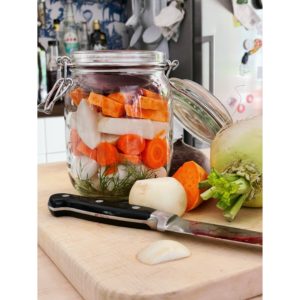


When the vegetables were still fermented in the traditional way, a 5-10% brine was used. This is ideal at high temperatures because the vegetables remain crunchy even after the lactic acid fermentation process. At moderate and cool temperatures, 3% salt is sufficient. The lower salt content is also better suited to the usual Central European taste.
The winter supply of sour vegetables is usually preserved in October and November.
Karışık Turşu is two in one
In the southern cities of Turkey, especially in Mersin and Adana, the fermented turnip drink Şalgam is offered for sale at street food stalls everywhere. It usually consists of turnip and carrot, often also beet and chili, fermented in brine. Most stalls offer a spicy and a mild alternative.
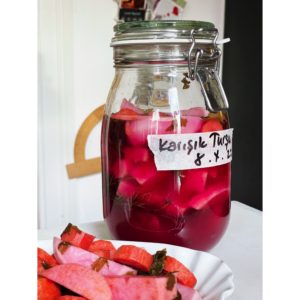
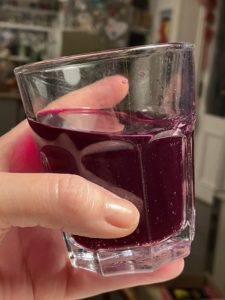
The Karışık Turşu brine tastes pretty much the same, and you can control the spiciness yourself by adding more or less chili. Another great example of a zero waste ferment. I'm loving it.
How does Karışık Turşu taste best?
Mixed sour vegetables are particularly popular as a side dish. Due to its appetizing properties, it is also often served as a starter or mezze.
In summer 2023, I made a Karışık Turşu version with freshly brewed linden tea for a TV report for German public broadcaster NDR. Linden tea is a very popular Turkish drink, so I found the combination quite appropriate. The result is fabulous, by the way! You can find my recipe in the NDR recipe collection https://www.ndr.de/ratgeber/kochen/rezepte/In-Lindenlake-fermentiertes-Gemuese,gemuese842.html
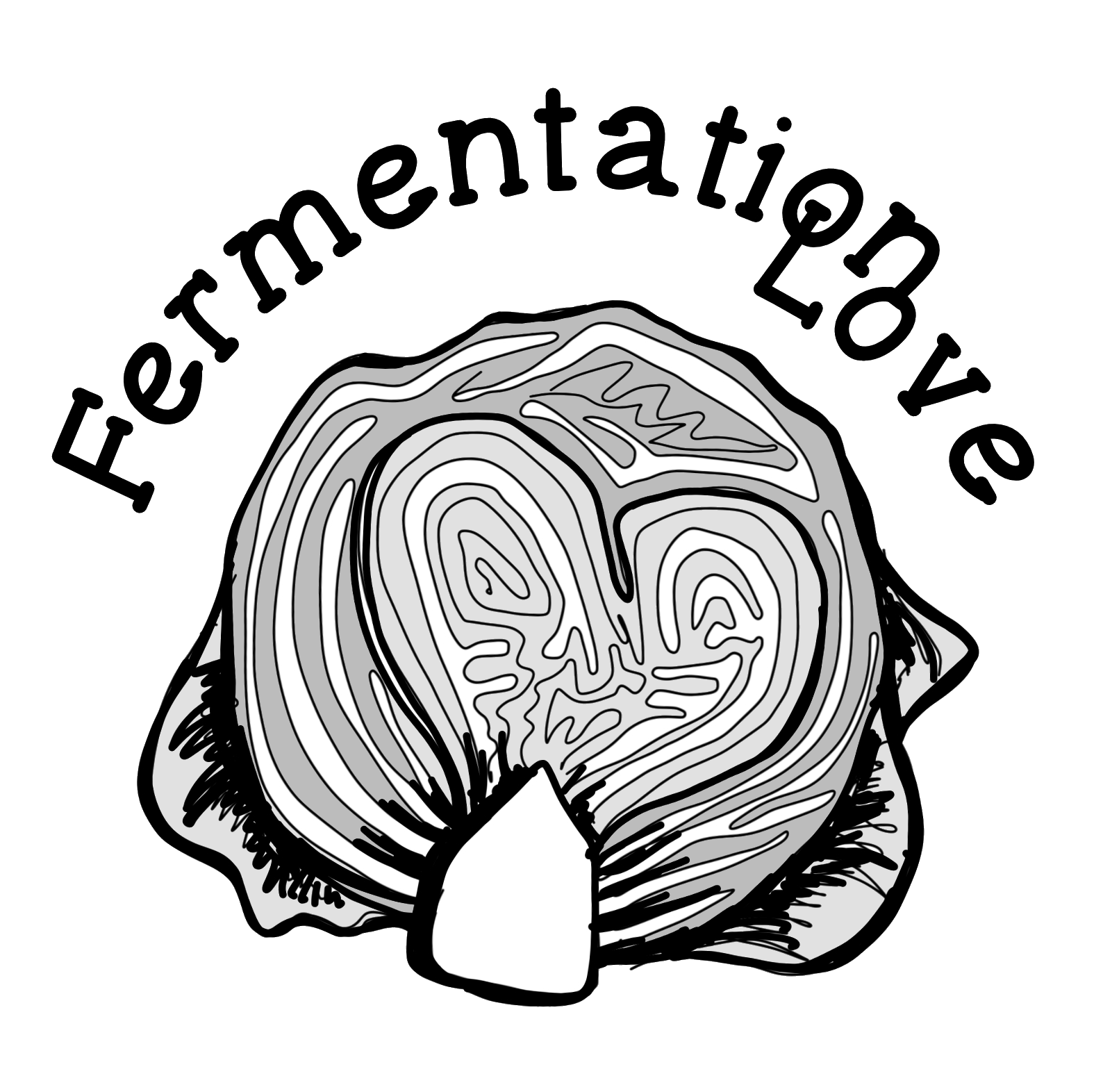
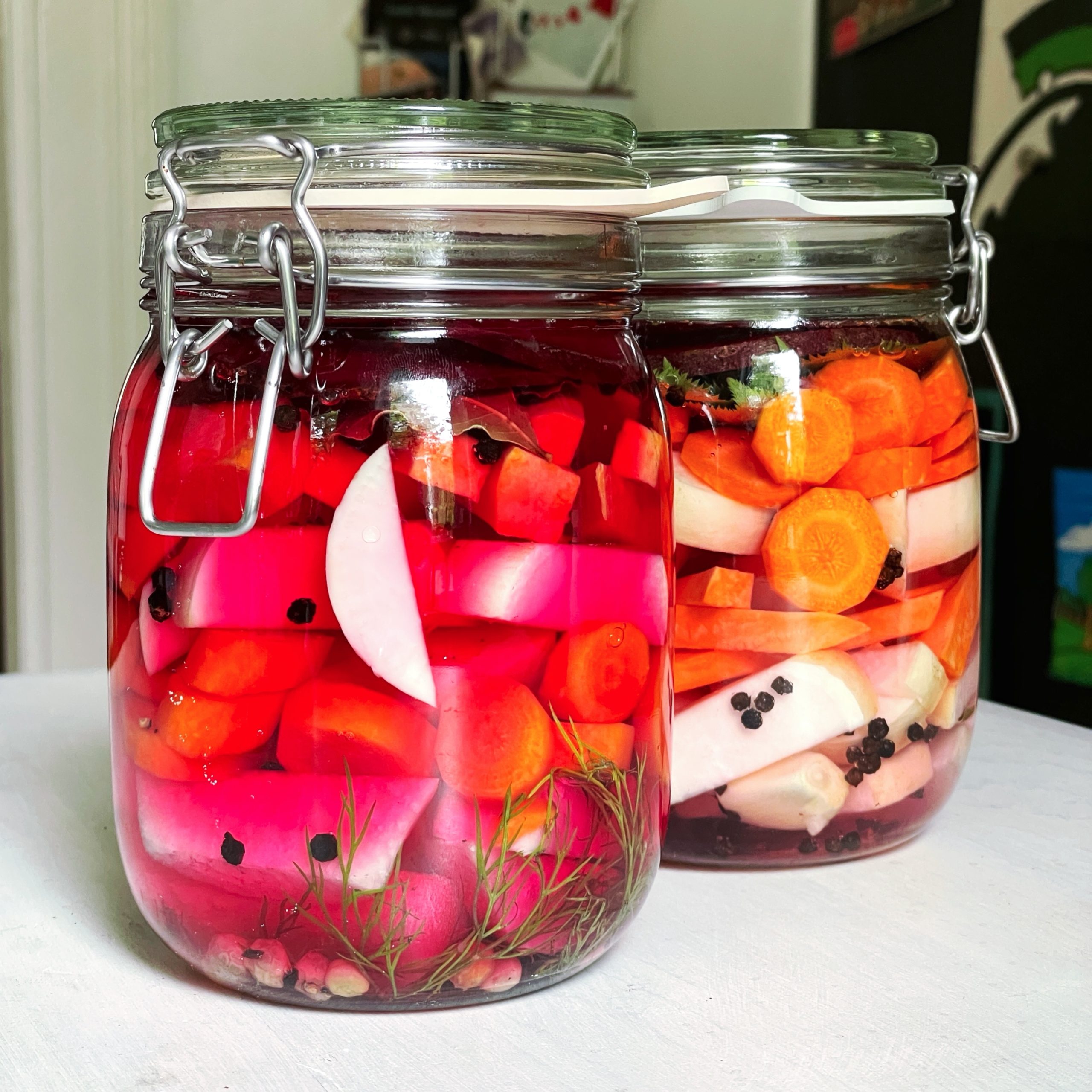
Ich finde das Zusammenspiel Obst/Gemüse genial. Ich hab sehr viel Winterretich bekommen, kann ich den auch dazugeben? Ich weiß nicht was ich sonst damit machen soll. Danke schon einmal für Deine Hilfe.
Hej Gudrun,
aus Winterrettich kannst du unbedingt Kkakduki machen!!! Aber natürlich kannst du ihn auch im gemischten sauren Gemüse unterbringen.
Gutes Gelingen,
Katsu
Ich hab nachgelesen und Du nimmst im Rezept Kohlrabi. Ist da mein Winterretich nicht zu scharf, braucht der auch nur so eine kurze Zeit zum Fermentieren? Danke für Deine Hilfe.
Das ist total flexibel, das zweite Rezept auf der Seite benutzt Ananas. Da du nach Winterrettich gefragt hast, bin ich einfach mal davon ausgegangen, dass er dir nicht zu scharf ist 🙂 Ich habe das schon gemacht und es gefiel mir gut!
Danke, mach ich gleich morgen. Und die Fermationszeit? Wir mögen eh alle gern scharf.werd vielleicht beim Chili ein bisschen vorsichtig sein. Und das Ananasferment springt mich auch direkt an. Vielen Dank noch einmal und einen schönen Abend.
Gerne. Probiere ab dem 3. Tag und finde heraus, wann es dir am besten schmeckt. Dir auch einen schönen Abend!
Moin Katsu,
ich habe auf der Seite des NDR und auch (in dem leider nicht mehr verfügbaren?) Video mit dir gesehen, daß man (Linden-)Blüten benutzen kann, um eine gewisse Süße in das Ferment zu bekommen. Dazu steht beim NDR “Karışık Turşu”, dass man die Blüten übernacht anwelken lassen und dann einen Sud daraus kochen soll. Ich wollte zum einen fragen, wie lange man das dann kochen muss und zum anderen, ob man den Sud dann auch einfrieren und zu einem späteren Zeitpunkt wieder auftauen lassen kann, um es dann für ein Ferment zu benutzen?
Und mich würde noch interessieren, ob man auch andere Blüten verwenden kann; und wenn ja, ob man dann auf etwas achten muss?
Vielen Dank für deine tolle, informative Arbeit!
Grüße
Nobby
Hej Nobby,
ich würde eher die Blüten trocknen und bei Bedarf einen frischen Sud kochen, 2-3 Minuten in sprudelndem Wasser. Du kannst auch einen starken Tee aufgiessen. Alle essbaren Blüten sind verwendbar, ich liebe auch Rosen sehr – hast du mein zweites Rezept in der Sammlung beim NDR schon entdeckt?
Gutes Gelingen!
Katsu
PS. Auf facebook ist das Video noch zu finden: https://www.facebook.com/ndrdas/videos/835758027654738/
Vielen Dank für deine schnelle Antwort.
Das zweite Rezept kannte ich tatsächlich noch nicht – sehr interessant das mit den Blüten.
Grüße
Nobby
PS: Sehr schön, hab’ ich mir gleich nochmal angeschaut.
Hallo, vielen Dank für das tolle Rezept, bin schon gespannt. Habe leider kein Bügelgefäß gehabt und es in Schraubgläsern gemacht. Sollte ich diese alle paar Tage öffnen wegen der Kohlensäure, die entsteht? Liebe Grüße!
Hej Jessi,
das kommt auf den Deckel an. Nockendeckel lassen CO2 eigenständig ab. Ansonsten wirst du vielleicht entlüften müssen, ich drücke dir die Daumen, dass es dir gut gelingt. Dieses Ferment ist leider sehr ungeeignet für Sauerstoffzufuhr, es entwickelt dann häufig Kahmhefe.
Toi toi toi,
Katsu